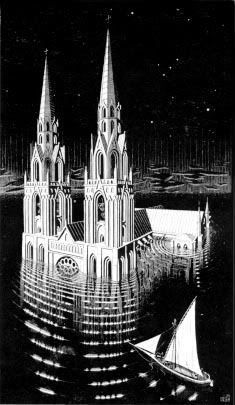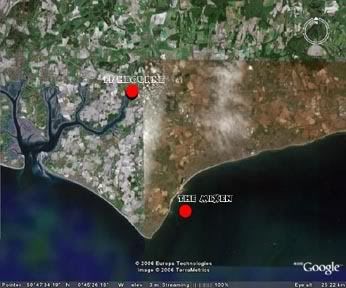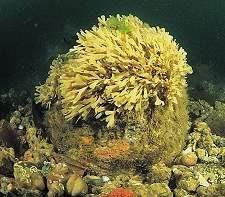Hi Stan!
Whereabouts on the 'West Coast'? I'm no expert, but I wouldn't have thought that there were any large ancient stone stuctures in the Americas until you get to the extreme South West?
Talking of floods!....
I don't know whether you've ever heard it, but there's a piece of music by Claude Debussy about a drowned Cathedral!
Here's an extract from Wikipedia about this alleged 'Drowned Cathedral'
Ys (also spelled Is or Ker-Ys in Breton) is a mythical city built in the Douarnenez bay in Brittany by Gradlon, King of Cornouaille, for his daughter Dahut.
'According to the legend, Ys was built below sea level, protected from inundation by a dam. The only keys of the gate in the dam were held by Gradlon, but Satan made Dahut steal them and give them to him. He then opened the gate and Ys was flooded. In some versions of the story, Satan was sent by God to punish the city, whose inhabitants were becoming decadent. Other versions of the story tell that Dahut stole the keys either at her lover's request or in order to open the gates of the city to let her lover in. The only survivors were the King Gradlon, who was advised to abandon his daughter and Saint Winwaloe by Saint Winwaloe himself. Gradlon then founded Quimper and on his death, a statue representing him on horseback looking in the direction of Ys was erected on the Saint Corentin Cathedral and still stands there. Bretons said that Ys was the most wonderful city in the world, and that Lutèce was renamed Paris after Ys was destroyed, because "Par-Is" in Breton means "Similar to Ys".
This deluge legend differs from others because the location of Ys is well defined: the statue of Gradlon looks at it, most of the localities mentioned exist, several Roman roads actually lead into the sea (and are meant to lead to Ys), and this myth could in fact depict the engulfment of a real city during the 5th century. This history is also sometimes viewed as the victory of Christianity (Gradlon was converted by Saint Winwaloe) over druidism (Dahut and most inhabitants of Ys were worshippers of Celtic gods). However, a Breton folktale asserts that Gradlon met, spoke with and consoled the last Druid in Brittany, and oversaw his pagan burial, before building a chapel in his sacred grove.
"So what?...Stoopid Limey!"...I hear you cry!
Well...my previous posting about 'Selsey' is a possible answer to the legend..
'Sel-sey' means 'Seal Island'. An undeniable fact is that there was a substantial Roman Port there (now under the sea)..Wherever there was a Roman settlement, there would have been a Temple. It is known that there was an early Christian settlement on 'Seal Island'
They would have been Romano-British Christians before assimilating with the Saxons.
The sea DID inundate that building, and the centre of worship was transferred to CHICHESTER (NOVIOMAGVS REGNORVM)
The Cathedral was begun in the early 1100's after the Norman invasion. If you look carefully at the outside of the cathedral (and I did recently) you can clearly see incorporated Roman brick and odd shaped stone. A lot of it came from the nearby Fishbourne Roman Palace (destroyed by fire in the 4th Cent.)
Since reading your post Stan, I've found out that
'Mixon' actually refers to a type of Limestone. The quarry at Selsey now appears to be VERY important!
I've discovered that it was used in the building of Fishbourne Palace and many buildings in the principle Roman city of NOVIOMAGVS REGNORVM (Chichester) It was still being mined as late as the 11th Century..
Then the sea came!
This is is a fanciful theory by me...but is it just coincidence that the 'SEY' of 'Selsey' is a similar sound to the Breton 'Ys'?...and is the mention of battles with Satan a bit of allegory over Christianisation of the Romans in the area during the late 3rd century?
Anyway, the legend, both here in Sussex and over there in Brittany, is that on Stormy nights, the bells of the sunken 'Cathedral' can still be heard! (all true of course!)
http://www.roman-britain.org/places/nov ... gnorum.htm




